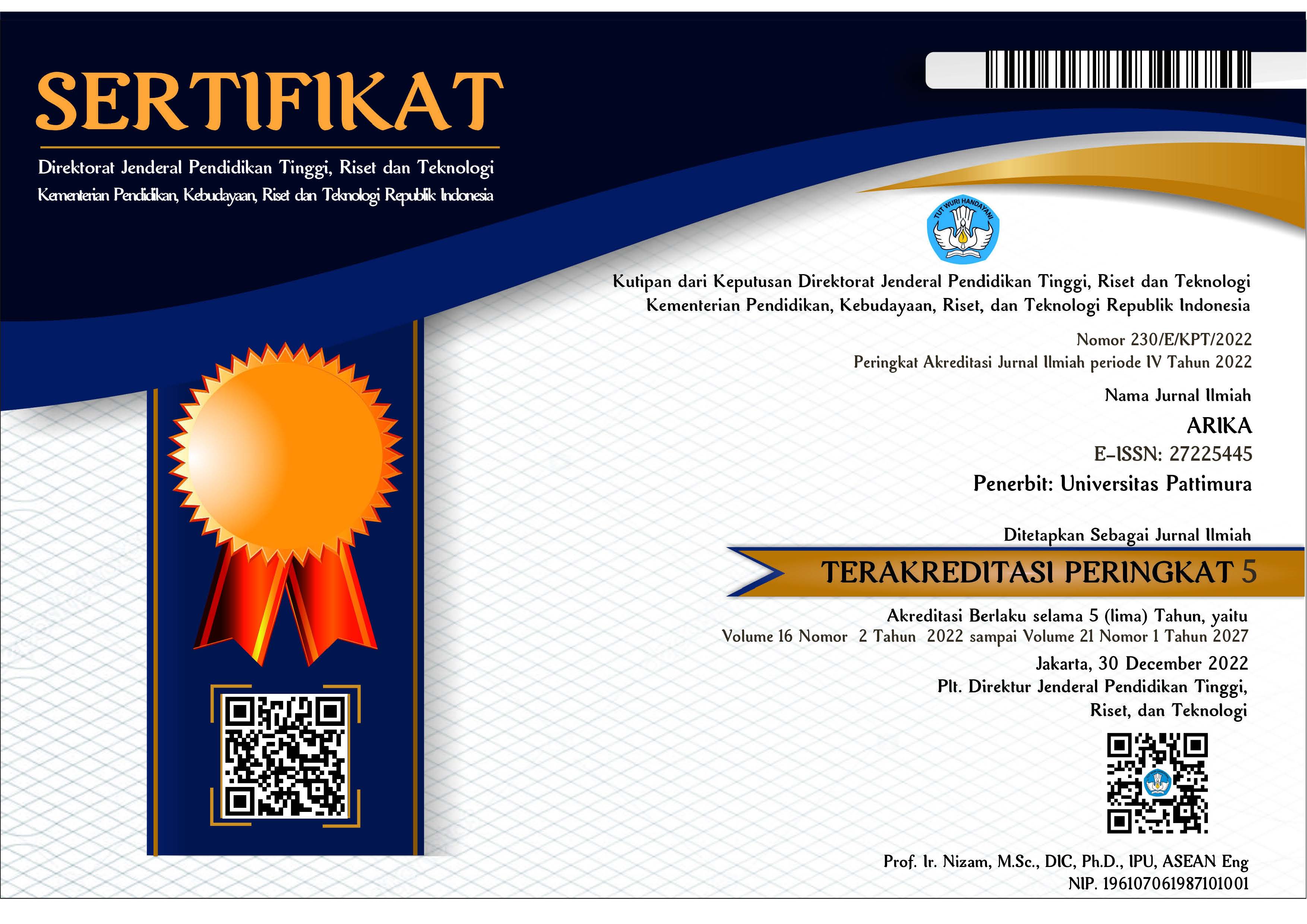Perubahan Sifat Mekanis Komposit Polyester Yang Diperkuat Serat Sabut Kelapa Akibat Variasi Fraksi Volume
Abstract
Composite materials with natural fiber filler have widely known in the manufacturing industry. Environmentally friendly material, which is able to be recycled, and can be destroyed itself by nature is a requirement of today's technology. Coco fiber is a natural fiber derived from the processing of coconut wastes that are abundant in the Moluccas and has not utilized optimally. A research are conducted with focus on getting the maximum value of volume variation fraction of coco fiber to the value of bending strength and impact strength, in accordance with the desired application. This research uses Hands Lay Up method in manufacturing the fiber composite sole with a variation of the volume fraction of coconut fiber 90%: 10%, 80%: 20%, 70%: 30%, 60%: 40%, 50%: 50%. The dependent variable is strength bending and impact strength. Results show that an increase in bending strength and impact strength with escalation of volume fraction. The highest bending strength of coco fiber composite is obtained at fraction volume 40% (90 709 MPa), the bending strength lowest at fraction volume 10% (66 520 MPa), Price Impact highest at fraction volume 50% (0203 J / mm2) and the lowest in fraction volume 10% (0.041 J/mm2).
Downloads
An author who publishes in the ARIKA Jurnal agrees to the following terms:
- The author retains the copyright and grants ARIKA journal the right of first publication of the work simultaneously licensed under the Creative Commons Attribution-ShareAlike 4.0 License that allows others to share the work with an acknowledgment of the work's authorship and initial publication in this journal.
- The author is able to enter into separate, additional contractual arrangements for the non-exclusive distribution of the journal's published version of the work (e.g., post it to an institutional repository or publish it in a book) with the acknowledgment of its initial publication in this journal.
- The author is permitted and encouraged to post his/her work online (e.g., in institutional repositories or on their website) prior to and during the submission process, as it can lead to productive exchanges, as well as earlier and greater citation of the published work (See The Effect of Open Access).










